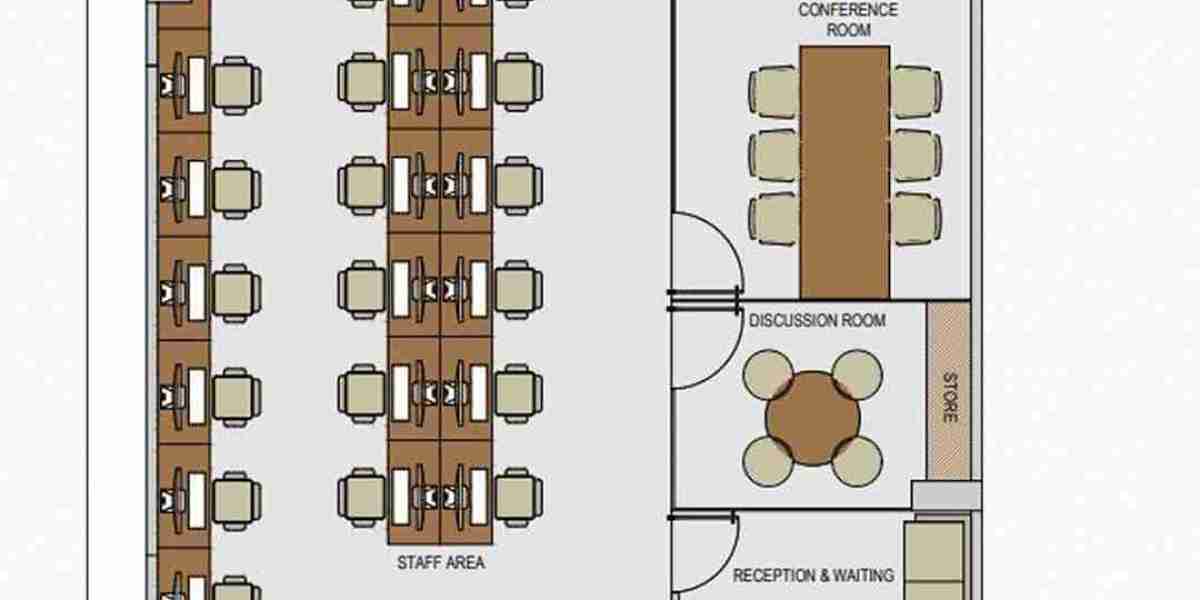An efficient office is much more than just desks and chairs. It’s a space where creativity, productivity, and collaboration can thrive. Proper office planning and layout is key to ensuring your workspace not only meets the needs of your employees but also supports your business goals. Whether you're setting up a new office or redesigning an existing one, following these essential tips will help you create a well-organized and functional workspace.
1. Define Your Objectives
Before diving into the design, it’s important to understand the specific needs and goals of your office. Do you want to improve collaboration among team members, increase individual productivity, or create more meeting spaces? Start by evaluating how your office space is currently being used and what improvements are necessary. This step lays the foundation for a successful office planning and layout.
2. Assess Space Utilization
Space is one of the most valuable assets in an office. Ensure you’re making the best use of every square foot by analyzing how space is currently utilized. For example, are there underutilized areas that can be repurposed? Is the flow of movement within the office smooth and efficient? The goal is to design a layout that balances comfort and functionality, promoting a seamless workflow. At this stage, it's also essential to consider space planning in interior design, as this will help you allocate resources effectively and avoid overcrowding.
3. Incorporate Flexibility in Design
Modern offices require flexibility. With evolving business needs, a rigid office design may become outdated quickly. Consider modular furniture and adjustable seating arrangements, which can be easily reconfigured as needed. Incorporating flexible spaces such as breakout areas or collaborative workstations will support team collaboration and individual tasks, making your office planning and layout more dynamic.
4. Maximize Natural Light
Lighting is an often overlooked but crucial element in office design. Studies show that natural light can significantly improve mood, reduce eye strain, and boost productivity. When creating your office layout, position workstations near windows to take advantage of sunlight. If your office has limited natural light, consider installing light fixtures that mimic daylight. Additionally, avoid placing bulky furniture that blocks natural light.
5. Ergonomics and Comfort Matter
A well-planned office layout should prioritize the comfort of its users. Incorporate ergonomic furniture like adjustable desks and chairs to support healthy postures. This not only improves employee well-being but also increases productivity. By investing in ergonomic designs, your office planning and layout will enhance overall workplace satisfaction and reduce fatigue.
6. Encourage Collaboration with Open Spaces
Open-plan offices have become a popular trend, and for good reason. Open spaces encourage communication, collaboration, and a sense of community among employees. However, it’s important to strike a balance between open work areas and private spaces. While open spaces are great for teamwork, employees still need quiet zones for focused tasks. Incorporating both types of spaces will result in a well-rounded office planning and layout.
7. Design for Tech Integration
Technology is at the heart of every modern office. When planning your layout, consider how technology will be integrated into the space. This includes setting up workstations with ample outlets, ensuring strong Wi-Fi coverage, and designing meeting rooms equipped with video conferencing technology. A tech-friendly office layout ensures employees can work efficiently without unnecessary interruptions.
8. Plan for Future Growth
While it’s important to meet your current needs, it's equally vital to design your office with future growth in mind. Ensure there’s enough space for additional employees and technology upgrades down the line. Having a scalable layout will save you time and money in the long run, making your office planning and layout a long-term success.
9. Use Design to Reinforce Company Culture
The layout and design of your office should reflect your company’s culture and values. Whether it’s through color schemes, branding elements, or specific furniture choices, your office layout can communicate your company’s identity. A well-planned design fosters a positive work environment and can even help attract top talent.
10. Prioritize Storage Solutions
Clutter can quickly ruin the efficiency of even the best-designed office. Ensure your office layout includes plenty of storage solutions, such as filing cabinets, shelves, and lockers. Modular storage units are a great option, as they can be customized to fit the unique needs of your office.
Conclusion
Successful office planning and layout requires a combination of practical solutions and creative thinking. By focusing on factors like space utilization, ergonomics, flexibility, and future growth, you can design an office that enhances productivity, fosters collaboration, and reflects your company’s culture. Implementing these essential tips will ensure your office is a space where both employees and your business can thrive.













